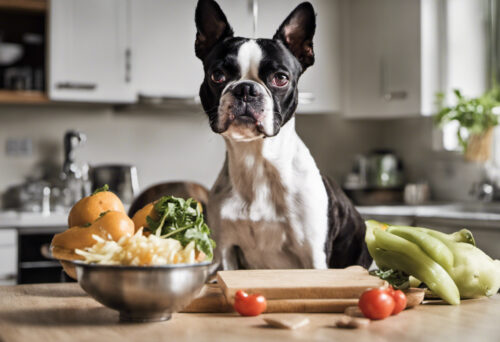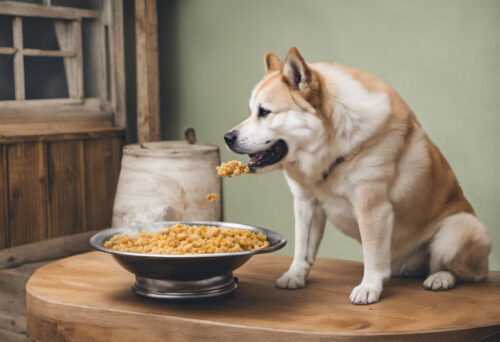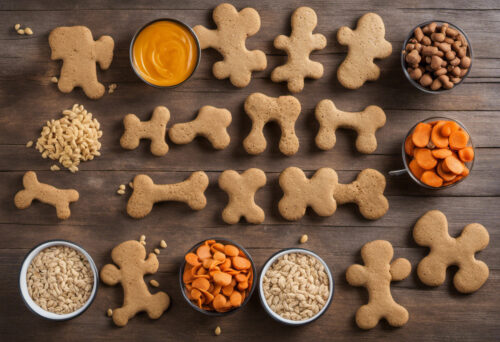Every dog parent knows that heart-melting look their furry friend gives them when they’re enjoying a meal or snack. Those begging eyes might be tempting, but remember – what’s delicious and nutritious for humans can be downright dangerous for dogs. Just because we can munch on something without any problem doesn’t mean it’s safe for our furry friends. As much as they might want to sample our foods, we need to be mindful about what we share with them. So let’s chow down on some serious knowledge about toxic foods you should definitely keep off your dog’s menu.
Understanding Canine Digestion
Before we sniff out the foods that are bad news for dogs, let’s take a moment to understand the canine digestive system. Dogs aren’t just smaller, furrier versions of humans – their bodies work differently, including the way they process food.
Despite years of domestication and their love for table scraps, dogs are primarily carnivorous, designed to eat a diet high in protein. While their diet can be supplemented with certain fruits and vegetables, many human foods are simply too rich, fatty, or chemically complex for dogs to handle.
That’s why some foods that we can digest with ease can wreak havoc on a dog’s body. It’s not just a matter of an upset stomach – some human foods can cause severe health problems and even prove fatal for dogs. As dog owners, it’s crucial we understand these differences to keep our beloved pets safe and healthy.
Common Foods That Are Toxic to Dogs
Dr. Gary Richter, a renowned veterinarian and pet nutrition expert, once stated, “A dog’s diet is the foundation of their health. Avoiding toxic foods is just as important as providing the right nutrition.”
Now, let’s dig into the details. Here’s a list of some common human foods that are toxic to dogs. Make no bones about it – these should never be on your dog’s plate:
Chocolate
Who doesn’t love chocolate? Well, dogs definitely shouldn’t. Chocolate contains theobromine and caffeine, both of which are toxic to dogs. While humans can easily metabolize these substances, dogs process them more slowly, allowing them to build up to toxic levels in their system. Depending on the type and amount of chocolate, ingestion can lead to a range of symptoms from vomiting and diarrhea to abnormal heart rhythm and even seizures. In extreme cases, chocolate consumption can be fatal for dogs.
Grapes and Raisins
These tiny fruits may seem like a harmless treat for your furry friend, but they’ve been known to cause acute kidney failure in dogs. Scientists aren’t exactly sure what substance in grapes and raisins causes this reaction, but the result can be catastrophic. Just a small amount can make a dog sick, so keep your fruit bowl and your baked goods out of paw’s reach.
Onions and Garlic
As flavorful as these are in our meals, they can be dangerous to dogs. Onions and garlic contain compounds that can damage a dog’s red blood cells if ingested in sufficient quantities. This can lead to a condition called hemolytic anemia, causing symptoms like lethargy, pale gums, elevated heart rate, and even collapse. Note that this toxicity applies to all forms of these foods, whether raw, cooked, powdered, or dehydrated.
Xylitol
This artificial sweetener is found in a lot of sugar-free products, including gum, candy, baked goods, and even toothpaste. While it’s a safe sugar substitute for humans, it’s extremely toxic to dogs. Even small amounts can cause a sudden drop in blood sugar (hypoglycemia), leading to symptoms like disorientation, seizures, and in severe cases, liver failure.
Alcohol
It might seem obvious, but it bears repeating – alcohol is a definite no-no for dogs. Even small amounts can cause alcohol poisoning in dogs, leading to symptoms like vomiting, disorientation, difficulty breathing, tremors, and in severe cases, coma or death.
Remember, “the way to a dog’s heart is through its stomach, but not all foods lead to a happy heart. It’s critical to know what’s toxic for them.” – Cesar Millan

Other Potentially Harmful Foods
According to Dr. Jill A. Richardson, a veterinarian with the ASPCA, “Our pets rely on us to keep them safe. And one of the most common ways dogs are hospitalized is because they’ve eaten something they shouldn’t have. It’s our responsibility to know what foods can harm them.”
While the above list covers foods that are outright toxic to dogs, there are other foods that, while not toxic per se, can still lead to health problems in dogs:
Caffeine
Like chocolate, products containing caffeine are a no-go for dogs. This includes coffee, tea, energy drinks, and some medications. Caffeine is a stimulant, and while it might give us a much-needed boost in the morning, it can cause a range of problems in dogs, from restlessness and rapid breathing to heart palpitations and muscle tremors.
Dairy Products
Dogs don’t have much lactase, the enzyme needed to break down lactose in milk. As a result, most dogs are lactose intolerant to some degree. While small amounts of dairy might not cause a problem, larger quantities can lead to gastrointestinal upset, including diarrhea and vomiting.
Salty Foods
We all know how tasty salty snacks can be, but don’t share them with your pup. High levels of salt can lead to sodium ion poisoning in dogs, resulting in symptoms like vomiting, diarrhea, high fever, tremors, and seizures. In severe cases, excessive salt can be fatal.
What to Do If Your Dog Ingests Harmful Foods
If you suspect your dog has eaten something they shouldn’t, don’t panic. Time is of the essence, so take immediate action. Contact your vet or a local emergency animal hospital right away. If possible, provide them with information about what your dog ate, how much, when they ate it, and any symptoms they’re displaying.
In some cases, the vet might instruct you to induce vomiting at home, but don’t do this unless told to – in some cases, it can cause more harm. Once at the vet’s office, treatment will depend on the type and amount of toxin ingested. This could range from inducing vomiting or pumping the stomach to administering activated charcoal, which can bind to certain toxins and prevent them from being absorbed into the bloodstream.
Conclusion
In the end, it’s all about keeping our furry friends safe and healthy. It might seem like a bummer to keep your pup from sharing in your snacks, but remember – their health and safety are what’s most important. Just as you wouldn’t let a child eat something harmful, the same goes for your dog.
In her book, “Feeding Dogs: A Practical Guide”, Dr. Clare Bartram writes, “Just as you would childproof your home for a toddler, you should food-proof your home for your dog. Keep foods that are toxic to them out of their reach.”
Dr. Karen Becker adds that, “your dog’s diet directly influences their health and wellbeing. Feeding them safely means knowing not just what they can eat, but also what they should avoid.”
When it comes to feeding your dog, always err on the side of caution. If you’re unsure whether a food is safe, do some research or ask your vet. Let’s keep our dogs’ tails wagging and their bellies safe!



